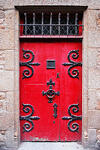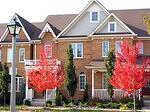Every Connecticut homeowner should know about these 2 potential dangers in an older or historical home
 New England is famous for the quaint antique homes that make up so many towns and neighborhoods. With built-in history and many with a “historical” designation, the charm almost can’t be contained. Some aspiring buyers move to the area just so they can live in such a home. But there is a darker side to the story.
New England is famous for the quaint antique homes that make up so many towns and neighborhoods. With built-in history and many with a “historical” designation, the charm almost can’t be contained. Some aspiring buyers move to the area just so they can live in such a home. But there is a darker side to the story.
Older or historical Connecticut homes can have lurking issues that don’t include rusty pipes or rotted out staircases. The fact is, many older homes were built before modern building codes and before there was a deep understanding of many hazardous materials such as asbestos, anthrax, or lead. In this post, we’ll discuss a few things to get checked in your beautiful, quaint, historical charmer of an old home.
Your plaster. It may sound crazy, but if your home is more than 40 years old, you could have anthrax hiding in the plaster of your home.
Yes, we said anthrax.
Before 1900, almost no controls were imposed on the ingredients for plaster. Sometimes for lime-based plaster, animal hair would be mixed in as filler. It is possible that some of that hair came from animals that had anthrax disease. The disease causes skin infections and/or lung issues.
The fact is, that anthrax could still be lurking inside that plaster. To find out if you have this type of plaster, take a look at it—it will be lumpier than the modern stuff, and more crumbly as well. If any pieces have chipped off, the animal hair inside will be easily detectable.
If you still aren’t sure, have a professional check the most likely spots in your beautiful older home where this plaster could have been used—typically walls and ceilings. We highly recommend hiring someone for this task even though the risk of contracting anthrax is very low. Put simply, it’s not worth taking a risk.
Balloon framing. What in the world is that? Most homeowners ask. And the answer is: It’s a style of home building that was popular in the 1800s. It was popular with settlers because it did not require a high amount of expertise to build. The downside? It was much more dangerous in a fire. That lovely older historical Connecticut home, built with wall cavities that all connect, makes it much easier for a fire to spread from the basement straight up to the top of a house in a flash. If you have this style of home, hire a professional immediately to discuss how you can create fireproof barriers to stop a fire spreading so quickly.
For more information on maintaining an older home, try this blog post.







